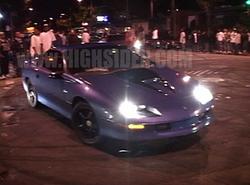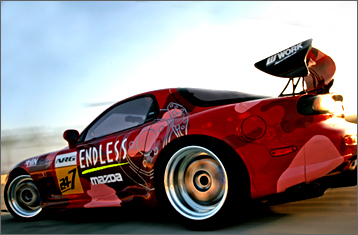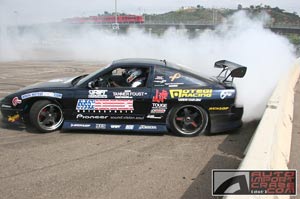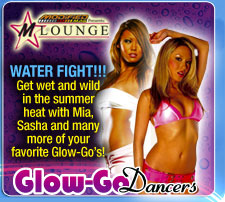In the 1990’s and before, the sideshows were late-night outdoor gatherings of African-American young adults in East Oakland parking lots–first at Eastmont Mall, and later at Pac ‘n Save on Hegenberger, on the way to the airport. These young people were not interested in breaking the law or running from police or terrorizing the community–what they wanted was a safe space, in their own neighborhoods, where they could gather to show off their “tight” cars, play music, and socialize.
 The “showing off their cars” part sometimes involved doing “donuts” (an
East Oakland car sport that goes back decades, long before the sideshows). But “donuts”
were a relatively small part of the original sideshows, which were more leisurely,
picnic-like events than the 15-minute street corner affairs we’ve come to know. More
often the “showing off their cars” thing in the original, parking lot sideshows involved
fixing up cars with special rims or wheels or paintjobs, stereos in the trunk, home
theaters in the dashboard, two-toned shag carpeting on the seats and floors and ceiling,
and the like–the kind of thing you see on the “Pimp Your Ride” show. These parking
lot sideshows were traditional courtship rituals, what you find in every human culture
and most animal societies, where the males try to outdo themselves in showing off
their prowess and talents to appreciative young females. In the animal world, male
peacocks display the largest, gaudiest, brightest tailfeathers. In the original,
parking lot sideshows, young men vied for female attention by displaying the largest,
gaudiest, brightest cars. It was a natural, normal, rite of passage and it bothered
almost no-one, not the owners of the parking lots, nor the people in the neighborhoods
where it took place. And they were a welcome antidote to the horrific violence taking
place at the time on Oakland’s streets.
The “showing off their cars” part sometimes involved doing “donuts” (an
East Oakland car sport that goes back decades, long before the sideshows). But “donuts”
were a relatively small part of the original sideshows, which were more leisurely,
picnic-like events than the 15-minute street corner affairs we’ve come to know. More
often the “showing off their cars” thing in the original, parking lot sideshows involved
fixing up cars with special rims or wheels or paintjobs, stereos in the trunk, home
theaters in the dashboard, two-toned shag carpeting on the seats and floors and ceiling,
and the like–the kind of thing you see on the “Pimp Your Ride” show. These parking
lot sideshows were traditional courtship rituals, what you find in every human culture
and most animal societies, where the males try to outdo themselves in showing off
their prowess and talents to appreciative young females. In the animal world, male
peacocks display the largest, gaudiest, brightest tailfeathers. In the original,
parking lot sideshows, young men vied for female attention by displaying the largest,
gaudiest, brightest cars. It was a natural, normal, rite of passage and it bothered
almost no-one, not the owners of the parking lots, nor the people in the neighborhoods
where it took place. And they were a welcome antidote to the horrific violence taking
place at the time on Oakland’s streets. Award-winning Oakland documentary filmmaker Yakpazua Zazaboi once described
coming over from Daly City in 1993 and encountering the Eastmont Mall sideshows for
the first time: “It was just black folks and cars everywhere. It filled up
the whole lot, all down there by Taco Bell and where the old McDonald's used to be.
People was walking around just talking. Having fun. And the thing that made me fall
in love with it was the fact that here we are in Oakland, but was from the other
side of the bay that was supposedly feuding with Oakland at that time, but people
weren't tripping off any of that. They weren't looking at us as if we were a threat.
They was more like a welcoming thing, like, 'Man, you see us, now get out
the car and be with us.'"
Award-winning Oakland documentary filmmaker Yakpazua Zazaboi once described
coming over from Daly City in 1993 and encountering the Eastmont Mall sideshows for
the first time: “It was just black folks and cars everywhere. It filled up
the whole lot, all down there by Taco Bell and where the old McDonald's used to be.
People was walking around just talking. Having fun. And the thing that made me fall
in love with it was the fact that here we are in Oakland, but was from the other
side of the bay that was supposedly feuding with Oakland at that time, but people
weren't tripping off any of that. They weren't looking at us as if we were a threat.
They was more like a welcoming thing, like, 'Man, you see us, now get out
the car and be with us.'"After Oakland police shut down the parking lot sideshows and pushed them into Oakland’s streets, setting up the wild, frantic, illegal affairs we so often see on newsclips, Zazaboi and some of his friends spent several years trying to win official support for a legal, sanctioned sideshow venue in the city of Oakland. Their idea was to hold a legalized sideshow in some enclosed arena where people would pay a small fee to enter, hip hop music would be played all over the area, food and beverages would be sold, and auto accessory vendors would pay a fee to operate booths. One entire location would be set aside for people to park novelty cars and show off their accessories. Another area would be a fenced-off arena, safe from spectators, where stunt drivers could do car tricks, among them the traditional “donuts” and other auto maneuvers that we see so much on the evening news. As Zazaboi described it several years ago, the events would be something like an “auto fair” or an “auto rodeo,” generating tax money for Oakland and promoting entrepreneurship among African-American Oakland youth who had been long marginalized by their native city. But attempts to hold those legalized sideshows were consistently blocked by top Oakland city officials.
Zazaboi’s major fear, however, has not that the legalized sideshows would never take place in Oakland, but that the idea would be taken over by some outside promoter who would steal the idea, come into Oakland and reap all the profits, giving nothing back to either the community or the people who created the original venues
Earlier this month, that’s exactly what happened. Not in Oakland, but nearby, at the Alameda County Fairgounds in Pleasanton.
There, on a sunny Saturday afternoon, a Southern California-based group of promoters called Vision Entertainment held what they call both “Hot Import Daze” and “Hot Import Nights,” which is a legalized sideshow in everything but name.


 dancers and deejays also competed for prizes. On another stage,
young women in bikinis strutted in what looked like a scene from a spring break video.
In an area of the parking lot, concrete barriers had been erected in a circle, and
a group of Japanese national (not Japanese American) stunt drivers were showing off
maneuvers called “sliding” or "drifting," many of them very similar–but
far inferior–to the “siding” and the “donuts” that you see on East Oakland streets.
dancers and deejays also competed for prizes. On another stage,
young women in bikinis strutted in what looked like a scene from a spring break video.
In an area of the parking lot, concrete barriers had been erected in a circle, and
a group of Japanese national (not Japanese American) stunt drivers were showing off
maneuvers called “sliding” or "drifting," many of them very similar–but
far inferior–to the “siding” and the “donuts” that you see on East Oakland streets. “Hot Import Daze-Nights”
Alameda County event was advertised. Unlike the days of the 1950’s segregation, no-one
put up a sign saying “No Colored Allowed.” But modern marketing is compartmentalized,
targeted to the nth degree by what events you leaflet and what radio stations you
advertise on, and so either the Alameda County event organizers chose not to target
African-Americans in Alameda County, or else the targeting was so bad that most young
African-American car and hip hop enthusiasts chose not to attend.
“Hot Import Daze-Nights”
Alameda County event was advertised. Unlike the days of the 1950’s segregation, no-one
put up a sign saying “No Colored Allowed.” But modern marketing is compartmentalized,
targeted to the nth degree by what events you leaflet and what radio stations you
advertise on, and so either the Alameda County event organizers chose not to target
African-Americans in Alameda County, or else the targeting was so bad that most young
African-American car and hip hop enthusiasts chose not to attend.